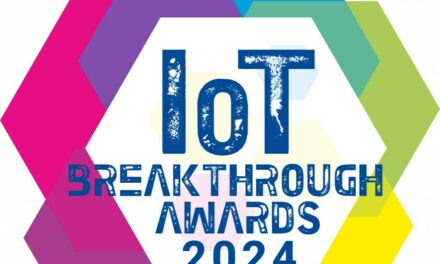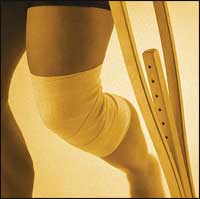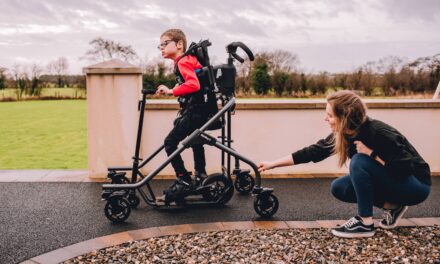Brooks Rehabilitation announces the completion of the MagTrack study, a collaborative research endeavor between Brooks and the Georgia Tech School of Electrical and Computer Engineering.
Feedback from the Brooks’ clinical team and its patients has allowed the engineering team at Georgia Tech to transform their early research prototype into a user-ready version that was tested by more than 17 power wheelchair users living with tetraplegia – a form of paralysis, caused by spinal cord injury, which affects the arms, hands, trunk, legs, and pelvic organs.
The collaboration between the Brooks and Georgia Tech teams has created a path to a first-of-its-kind, innovative application for patients and individuals living with disabilities. The teams – comprised of physicians, clinical therapists, and engineers – have a multi-disciplinary level of expertise of advanced science, technology, and clinical rehabilitation.
“We met with the Georgia Tech team years ago, when we first heard of the research breakthroughs they were achieving for wheelchair users. Brooks is constantly looking for technology that is useful for our patient population living with spinal cord injuries and mobility impairments. To see where the MagTrack project has advanced even just since the early stages of this study is incredible.”
— Geneva Tonuzi, MD, Medical Director, Spinal Cord Injury Program & Spinal Cord Injury/Disorders Day Treatment Program, Medical Director, Cyberdyne HAL Therapy, Brooks Rehabilitation
As a result of this engineering-clinical collaboration, MagTrack was created as a cutting-edge assistive technology that enables power wheelchair users to control their connected devices (eg, smartphone, computer) and drive their power wheelchair using an alternative, multi-modal controller. In addition, the assistive device is designed to be wearable, wireless, and adaptable to the user’s specific condition.
The MagTrack study is earning the praise of patients and scientists alike and has been published in IEEE Transactions on Biomedical Engineering. Since its inception, the MagTrack studies have tested the performance of the Head-Tongue Controller (HTC), an earlier version of the MagTrack technology, on its ability to perform complex human-machine interactions that will enhance the users’ quality of life.
The MagTrack’s HTC allows the user to perform a variety of complex tasks in a single controller through the use of tongue and head movements, which are detected by a discrete eyewear and a tracer placed on the tongue. This combination of input modalities allows the user to perform a variety of daily functions with customizable control; from performing complex computer tasks (eg, mouse navigation, scrolling, drag-and-drop), to completing advanced driving maneuvers when connected to a power wheelchair.
Simple Driving Tasks
In the latest study, researchers connected the MagTrack technology to a single power wheelchair donated by Quantum Rehab and recruited 17 patient volunteers from Brooks Rehabilitation to test the functionality and usability of the device by completing a set of both simple and advanced driving tasks. Results showed that new users of MagTrack can complete these tasks as fast, and sometimes even faster, with the MagTrack’s HTC rather than their personal, alternative controller.
Since the study session only lasted less than 3 hours – and in a power wheelchair that wasn’t their own – it is anticipated that participants would be much more proficient, and thus perform better with MagTrack if they are given more time to familiarize themselves with its multimodal capabilities, and use their own power wheelchair.
“Working with all of the participants has been very rewarding. Each patient who came in was someone who has been directly impacted by a spinal cord injury and who can truly benefit from this technology. It was amazing to see how their faces lit up when they saw they were able to control their wheelchair with such ease and comfort. The feedback from participants was great! They all said how impactful the technology is and how they can see this impacting their day-to-day lives if it were available to them. It’s been such an honor to be a part of this process and see the work and thought process behind such advanced technology.”
— Jesse Milliken (Baldwin), MS CCC-SLP, Spinal Cord Injury Program, Brooks Rehabilitation Hospital
Exciting Advancement
Patients from the Brooks Spinal Cord Injury Program that have participated in phase three of the study call the advancement “exciting” and a “great system that can be used for so many things.” After experiencing the technology themselves, they feel it will “really touch the lives of those that are able to use it.”
To date, the head array and sip-and-puff are the most common alternative controllers recommended by physical therapists to individuals living with tetraplegia, while specialized switches and joystick technology are available for those with remaining mobility in their upper extremities. These technologies were developed many decades ago for the basic need of controlling a power wheelchair. Since then, a lack of innovation in this field has hindered these assistive technologies from adapting to today’s technology.
Furthermore, they are affixed to the wheelchair which becomes inaccessible once the user is transferred to a bed, a couch, or any location away from the wheelchair. Therefore, there is a growing need for this population to have access to new alternative controllers that will enable them to be active members of this interconnected digital world.
“The trajectory of the MagTrack study shows a previously unprecedented possibility for the advancement of independent function as well as mobility for electric wheelchair users. Our team and partners are energized and motivated by the recent patient trials to continue to push this technology and its capabilities as far as possible. This technology can significantly improve people’s lives. We will continue to work to see these advances in assistive technology come to life.”
— Dr. Omer T. Inan, PhD, a faculty member at Georgia Tech, Director of the Inan Research Lab, and Linda J. and Mark C. Smith Chair in Bioscience and Bioengineering
Inan is an Associate Professor in the School of Electrical and Computer Engineering and an Adjunct Associate Professor in the Wallace H. Coulter Department of Biomedical Engineering.
Results from these studies are being used to further refine MagTrack and help design future studies to evaluate a participant’s ability to use this new type of alternative control in clinical, home, and community environments.
[Source(s): Brooks Rehabilitation, GlobeNewswire]





